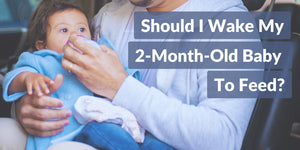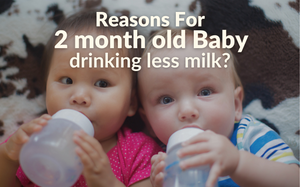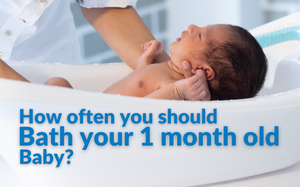Your little one’s skin requires tons of tender love and care. Here are some helpful tips to take care of your tiny tot’s delicate skin:
- Use baby soaps that do not contain any colour or fragrances, have a slightly acidic to neutral pH, are mild and have a moisturising action.
- Avoid using powder as it can block your baby’s sweat pores. Your baby may also inhale the powder accidentally.
- Change your baby’s diaper or nappy regularly and apply mineral oil on their bum if that is not possible.
- Baby shampoo that does not irritate the eyes should be used to wash your baby’s hair. It should be used only for short durations as it increases the risk of irritation of the scalp.
- Keep your baby’s nails short and clean.
- Coconut oil, mineral oil and other baby creams can be used for massaging your baby as they help with dry skin.
A few common skin conditions that you might encounter as your baby grows older, and some handy tips on how to take care of them.
Baby acne
Some babies get acne even before they are six weeks old. These pimples occur due to a type of yeast and are different from the acne adults have. They do not require any treatment and subside when your baby is around four months old without leaving any scars.In rare cases, your baby may get acne at about three months of age or older. You should consult a doctor as it could be caused by an ingredient in one of your baby products or by a health condition. This type of acne can leave scars on your baby’s skin, depending on the severity of the condition and the skin colour of your baby. Your doctor will tell you if your baby requires any treatment to prevent scarring.
Help your baby’s skin with these useful suggestions:
- Use medicine or wash for acne on your baby’s skin only when recommended by your doctor.
- Do not apply any oily or greasy products to your baby’s skin.
- Use lukewarm water to gently wash your baby’s skin but do not scrub the area with acne.
Diaper rash
If you do not change your baby’s dirty diaper often enough, the baby’s tender skin will get irritated by the urine and stools and turn red and sensitive. Sometimes a fungal infection may also look like a diaper rash. Your baby’s diaper rash should clear at home in about two to three days. If it does not, it’s time to see the doctor!Avoid a diaper rash with these tips:
- Change your baby’s diaper immediately when it gets dirty and wash your baby’s skin with warm water.
- Avoid baby cleaning wipes as they tend to dry the skin.
- Let your baby stay without a diaper for a little while to let the skin dry.
- Apply an ointment containing zinc oxide or unscented petroleum jelly to the skin in the diaper area while changing the diaper to protect this area.
- Try a different brand or type of diaper as certain diapers may have some fragrances or dyes that your baby is sensitive to.
- Use a bigger size of diapers or fasten them slightly looser as diaper rashes may also occur due to diapers being too tight.
- Use hot water to wash cloth nappies. You may need to rinse them more than once. Avoid using any fabric softeners as your baby may be sensitive to them.
Slapped cheek syndrome
Slapped cheek syndrome or fifth disease is a mild viral infection caused by parvovirus B19. The most prominent feature is the presence of a bright red rash on your baby’s cheek, which may look like your baby has been slapped. You may also notice the rash spreading to the baby’s hands and legs. The infection usually settles down on its own in about one to three weeks, and your baby will be immune life-long. Just keep your baby comfortable and well-fed, and you should be ok.Cradle cap
Cradle cap, also called seborrheic dermatitis, is commonly seen in infants. It appears on the forehead, face, behind the ears, eyelids, underarms, behind the knees, elbow crease, or any other skin folds. Seborrheic dermatitis appears in the form of crusty, scaly yellow or white patches on the scalp. It is caused by the overproduction of oil by oil glands and hair follicles. The cradle cap does not necessarily need any treatment; it will go away on its own within weeks or months.Meanwhile, you can help your baby by:
- Washing his/her hair regularly with a mild shampoo.
- Gently rub his/her scalp with a washcloth or your fingers to loosen the crust.
- Use baby oil on the head to soften a thick crust.
- Applying hydrocortisone cream once a day in case of a rash
Eczema
Eczema is thickened, dry, scaly, itchy, or bumpy skin that can become infected when scratched. The rash can appear on the forehead, scalp, cheeks, knees, or elbows of infants. When eczema worsens intermittently, it is called a flare-up. Soaps, wool, pollen, dry air, animals, certain foods, or infection can cause flare-ups of eczema. There is no particular treatment for eczema. However, it can be controlled with the following tips:- Do not bathe your baby frequently
- Let your child wear comfortable clothing
- Apply a light moisturiser to keep your baby’s skin hydrated
- Add non-allergenic oil to your baby’s bathwater to prevent itchy and dry skin
- Use steroid cream to control itchy, red skin
Rashes
Rashes or dermatitis is irritation or puffiness of your baby’s skin, which makes the skin dry, itchy, and reddish. Rashes can also include pimples, blisters, bumps, or lumps. Your baby can get a heat rash in a hot and humid climate or in winters if your child is wearing too many layers of clothes. Heat rashes are little skin bumps that occur when your baby is overheated. Diaper rash can appear when the baby’s skin is in contact with poop or urine for too long, causing the skin to become sore and red. Here are some useful tips to avoid baby rashes:- To prevent heat rash, dress your baby in comfortable, airy cotton clothes, especially in moist, hot weather.
- Make sure your baby does not scratch the rash; otherwise, it can lead to an infection.
- Use emollients to keep your baby’s skin soft, smooth and free from itchiness.
Angel’s kiss
A Salmon patch (nevus simplex) is a red- or pink-coloured birthmark that almost 80% of babies have at birth. The birthmark can be located on the forehead, eyelids, neck, or lower back, but when it is seen on the forehead in between the eyebrows, it is called an ‘angel’s kiss.’ These birthmarks disappear on their own and do not need any treatment.
Birthmarks are generally harmless, but some birthmarks can have health hazards. Therefore, it is advisable to talk to your paediatrician if your baby has some unusual birthmarks.
Your baby has delicate skin that requires gentle daily care. These tips will help to keep your baby’s skin healthy; however, you should consult your doctor if your baby shows any signs of infection or is running a fever.













LEAVE A COMMENT